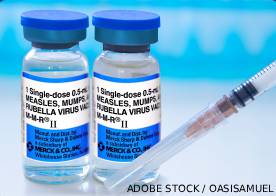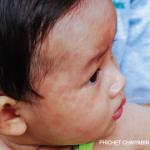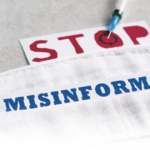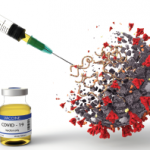‘Measles has been experiencing a resurgence in recent months and years, so rheumatologists need to know what to do when they see these cases in the community,’ says Physician Editor Bharat Kumar, MD, MME, FACP, FAAAAI, RhMSUS. ‘This month, we discuss the clinical implications of the reemergence of measles for our patients with rheumatologic diseases.’
With recent outbreaks of measles reported, the future status of measles elimination in the U.S. is uncertain. Many rheumatology patients are asking questions about whether they need revaccination or tests to check for measles immunity. Although most will not need revaccination, rheumatologists should be familiar with the topic to provide reassurance and guidance.
Pathophysiology & Natural Course
Before the advent of an effective vaccine, measles infected almost everyone at some point during childhood, resulting in 2 million to 3 million deaths per year globally.1 The RNA-based virus is a member of the Morbillivirus genus of the broader Paramyxoviridae family, which also includes the parainfluenza and mumps viruses.
The disease manifests with the classic three Cs: cough, conjunctivitis and coryza (runny nose, sneezing and congestion), as well as maculopapular rash, fever and malaise. Notably, individuals can spread the incredibly contagious virus through respiratory droplets and aerosols about four days before the rash manifests, delaying diagnosis and limiting the effectiveness of isolation as a method of controlling disease spread.2

Most people with measles fully recover within a week or two. However, the disease can cause complications, especially pneumonia from the virus itself or from a secondary infection. The disease can also lead to rare but serious neurologic complications: the autoimmune condition acute disseminated encephalomyelitis; inclusion body encephalitis; and subacute sclerosing panencephalitis, which can occur several years after measles infection.2
It’s thought that some of these complications may be more common or more severe in immunosuppressed people, such as people receiving immunomodulatory therapies for rheumatic disease. However, the true risks are hard to quantify, and they might vary on the basis of individual factors, such as medications and underlying disease severity.1
Immunomodulatory Effects
Importantly, although the immune response to measles itself is robust and long-lasting, measles leads to an increased risk of secondary infections for as long as two to three years.
William J. Moss, MD, MPH, executive director of the International Vaccine Access Center, Johns Hopkins Bloomberg School of Public Health, Baltimore, explains that this immune suppressive effect was described early in the 20th century, but it was thought to last only a few months. For example, clinicians noted that children who had previous positive responses to tuberculosis skin tests became negative after measles, indicating impaired cellular immunity.




